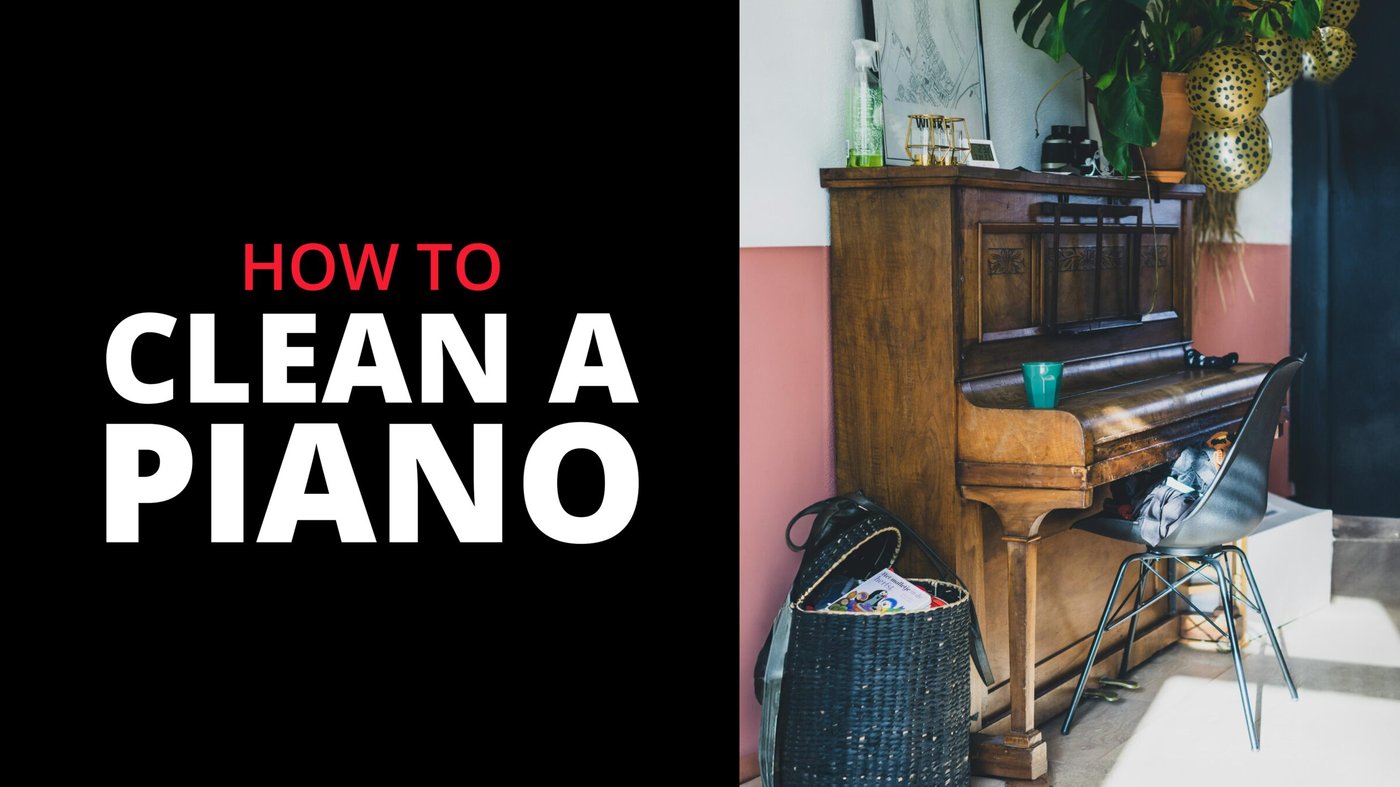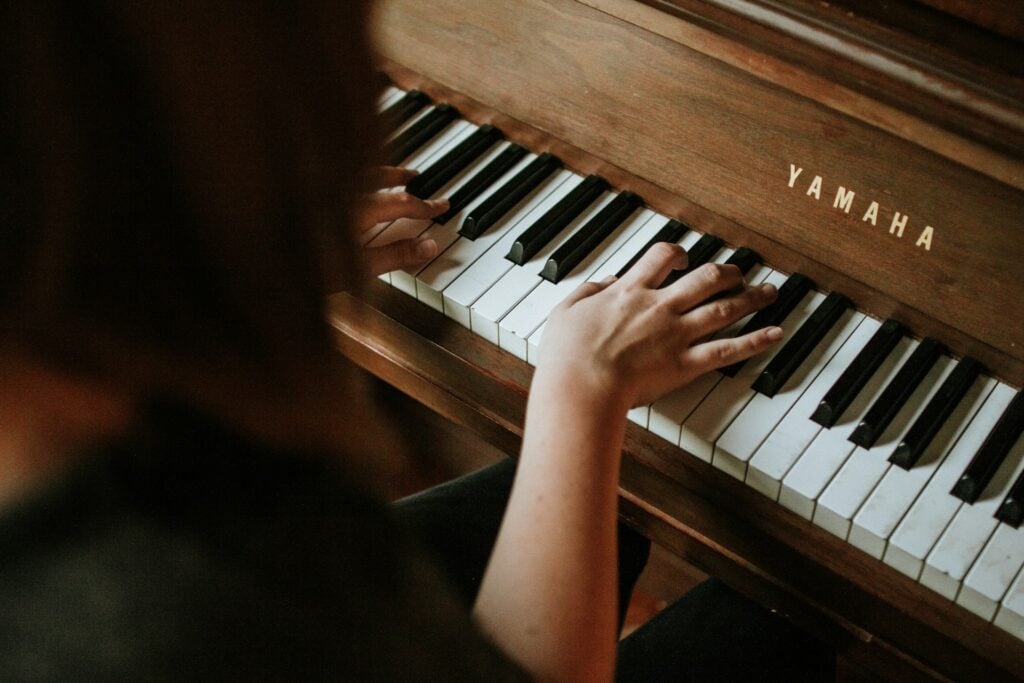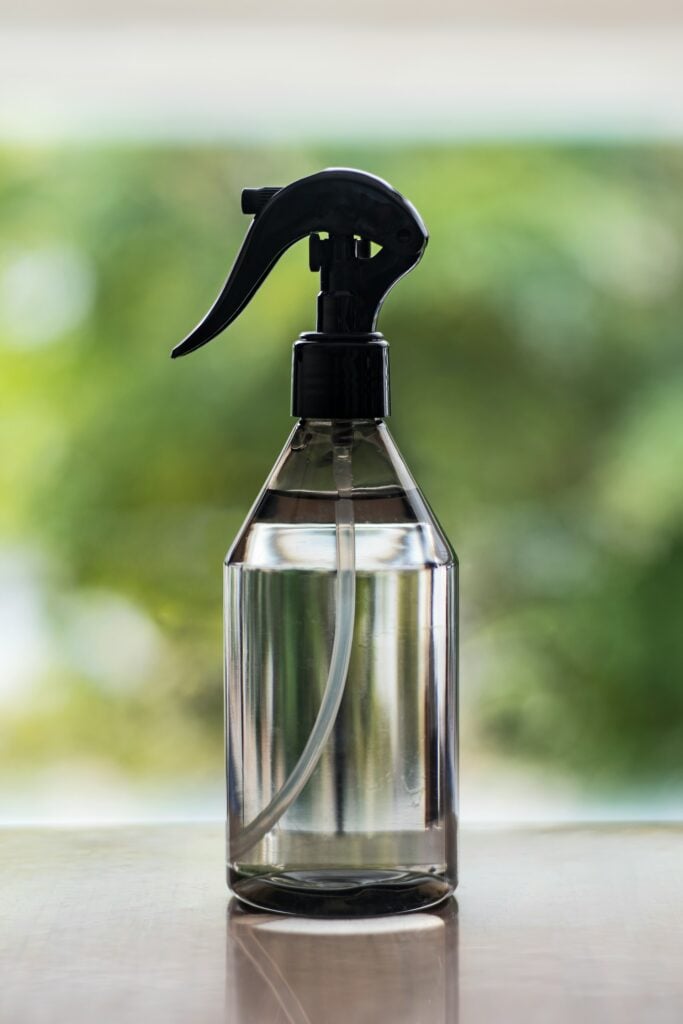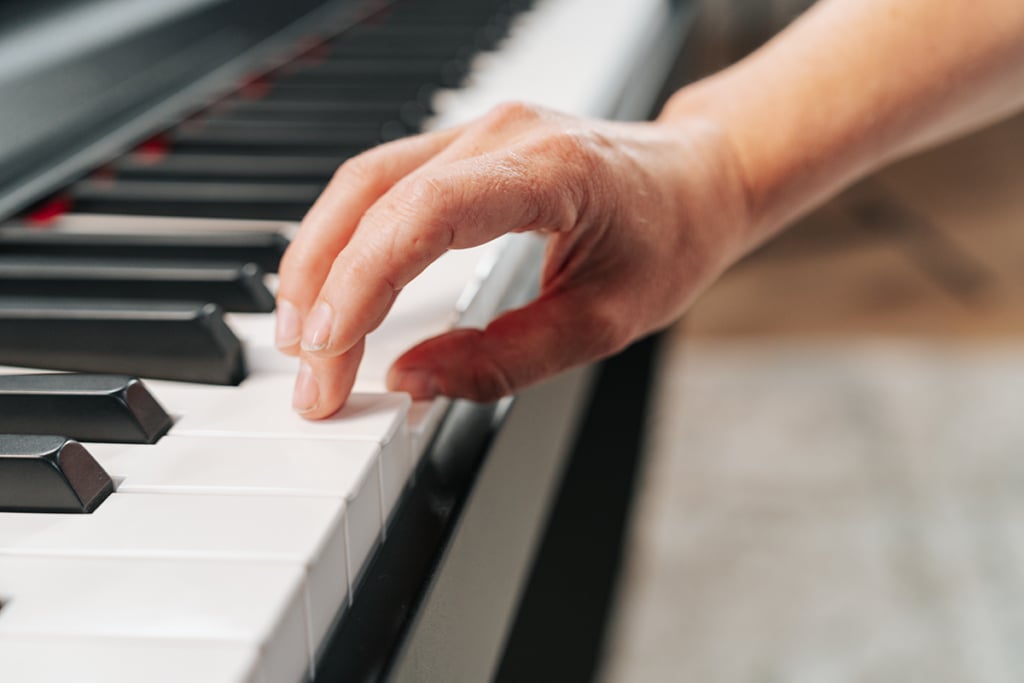
Your piano is a big investment and a precious possession. You’ll definitely want to keep it clean and pristine for years to come. But cleaning a piano can be intimidating—how do you make sure you don’t damage thousands of dollars worth of beauty?
Don’t panic, we’ve got you covered! In this comprehensive guide, we’ll discuss how to clean a piano properly and everyday things you can do to keep your piano in tip-top shape.
Table of Contents:
Get exclusive interviews, fascinating articles, and inspiring lessons delivered straight to your inbox.

This article will focus on acoustic pianos, as digital pianos are fairly easy to clean and maintain. But here are a few tips for digital piano owners:
Dishwashing liquid should be sufficient to clean your instrument. When wiping down the keys, Yamaha suggests you wipe towards you and use three microfiber cloths: one for (a tiny amount of) soap, one for rinsing, and one for drying. Again, use as little liquid as possible.

Acoustic pianos are delicate works of art that require the utmost care. If you have any doubts about how to clean your acoustic piano, your best resource is your local piano dealer and/or technician.
Here’s how to clean a piano yourself:
There are three main finish types that can be found on pianos: satin finish—a matte texture with little reflection; high polish finish—a glossy and reflective surface; and open pore finish—a wood grainy texture. The right cleaning solution depends on the type of finish.
Dust gently and follow the direction of the piano’s natural wood grains. Don’t swirl dust around, as this can create tiny scratches. Rather, sweep dust off the piano in a gentle, flourishing motion. And be sure to use a clean duster!
When using cleaning solutions, use sparing amounts, wipe gently (don’t scrub!), and never leave things very wet. You should only use enough liquid to dampen your cloth, and if something does drip on the piano, dry it off right away. Always keep cleaning solutions away from the keys and inner components.
Use wax sparingly (a few times a year) and at your own risk. Leaving excess wax can cause build-up that can only be removed by a professional. In most cases, a microfiber cloth dampened with a little water is sufficient for regular cleaning.

Pianos are meant to be touched and played! But if your instrument gets a lot of players, it can become as germ-ridden as a door handle. So consider sanitizing your keys to keep you and your visitors healthy.
Hydrogen peroxide can be used to disinfect piano keys. Dab a little bit onto a cotton pad and wipe the keys towards you. Then, dry it off with another cotton pad. Don’t use so much liquid that it starts to drip.

Sticking piano keys aren’t uncommon, especially among older pianos. There can be myriad reasons for sticky keys, from humidity to lodged objects that have fallen inside. Because there can be multiple causes to the issue and because piano components are so fragile, we recommend consulting with a professional piano technician to solve this problem.
DO:
DON’T:
We created this guide with the help of these resources. Check them out if you want to learn more about piano care:
The best way to learn piano is with real teachers, but not everyone has the time and money for a private instructor. At Pianote, you can get real feedback from real experts…all from the comfort of your own home. Explore our Method and community yourself with a free 7-day trial.
TRY PIANOTE FOR 7 DAYSCharmaine Li is a Vancouver writer who has played piano for over 20 years. She holds an Associate diploma (ARCT) from the Royal Conservatory of Music and loves writing about the ways in which music—and music learning—affects the human experience. Charmaine manages The Note. Learn more about Charmaine here.
/marketing/pianote/lead-gen/getting-started/coach.webp)
/marketing/pianote/lead-gen/getting-started/logo.webp)
By signing up you’ll also receive our ongoing free lessons and special offers. Don’t worry, we value your privacy and you can unsubscribe at any time.
We use cookies for traffic data and advertising. Cookie Policy »
/marketing/pianote/lead-gen/chords-progressions-digital-book/chord-progressions-exit-m.webp)
Want to play the most popular songs on piano?
Grab the Little Book of Chord Progressions to learn the most popular chord progressions used in modern music.
No credit card. No spam.
Just awesome chords to get you playing.
Don’t worry, we value your privacy
and you can unsubscribe at any time.